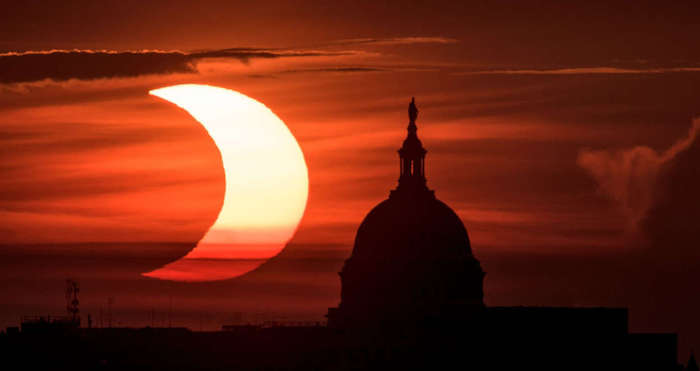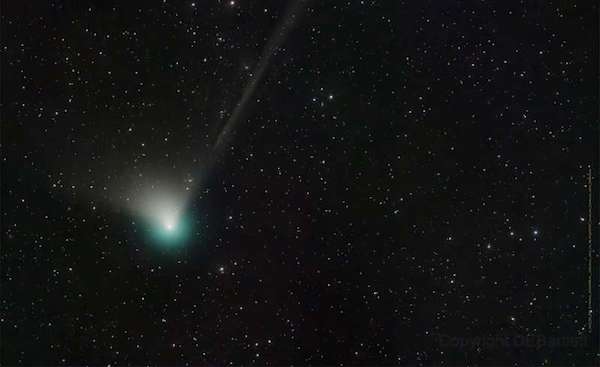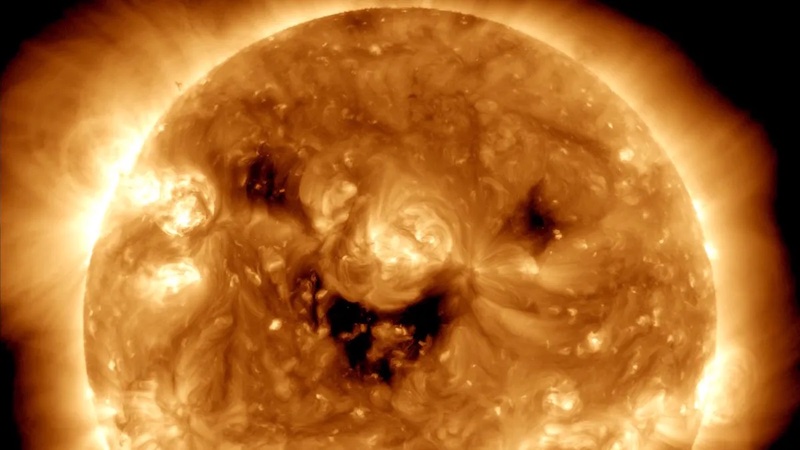
(quote)
Saturday saw a major solar eclipse cross the Americas, with all but the tips of North and South America able to see the new moon appear to take a bite out of the sun.
Over the course of a couple of hours the new moon began crossing the sun, covering as much as 90% of it as seen from some areas, before retreating to leave the sun’s disk whole again. Solar eclipse glasses were required at all times to se anything of the eclipse.
The maximum percentage of the sun covered by the moon differed according to location, with New York City seeing just a 23% eclipse while Salt Lake City 86%, Las Vegas 82%, Dallas 80%, Denver 78% and Los Angeles 70%. However, it didn’t get dark—even when 95% of the sun is covered by the moon light levels remain largely normal. The deciding factor in how much of the sun was blotted out by the moon was closeness to the moon’s antumbral shadow, which was 115 miles wide and swept across parts of nine U.S. states—Oregon, California, Idaho, Nevada, Utah, Colorado, Arizona, New Mexico and Texas. Those inside that narrow path got the best view of what was an annular (ring) solar eclipse, with a “ring of fire”—a halo of sunlight around the invisible moon—visible for a few minutes as the moon covered the center of the sun in a perfect circle.
October’s new moon brings us a ‘ring of fire’ solar eclipse
The annular solar eclipse of 2023 has completed its pass over the United States and moved into parts of Central America and South America.
Solar eclipses come in several varieties. There are total solar eclipses, for example, in which the moon blocks the sun entirely. Another type is an annular solar eclipse, in which the moon appears just a bit smaller than the sun; there is a ring of light around the edge of the moon. The reason for the different eclipses is that the lunar orbit is an ellipse rather than a perfect circle; the moon can be closer or farther away from us than “normal” on its passes. Though the difference is minimal, it’s enough to alter the apparent size of the moon in the sky. A big difference, visually, between annular and total eclipses is that one cannot see the solar corona (a part of the sun’s atmosphere) during an annular eclipse, because the ring of light around the moon is too bright.
(unquote)
Image courtesy Patrick T. Fallon / AFP / Getty Images






